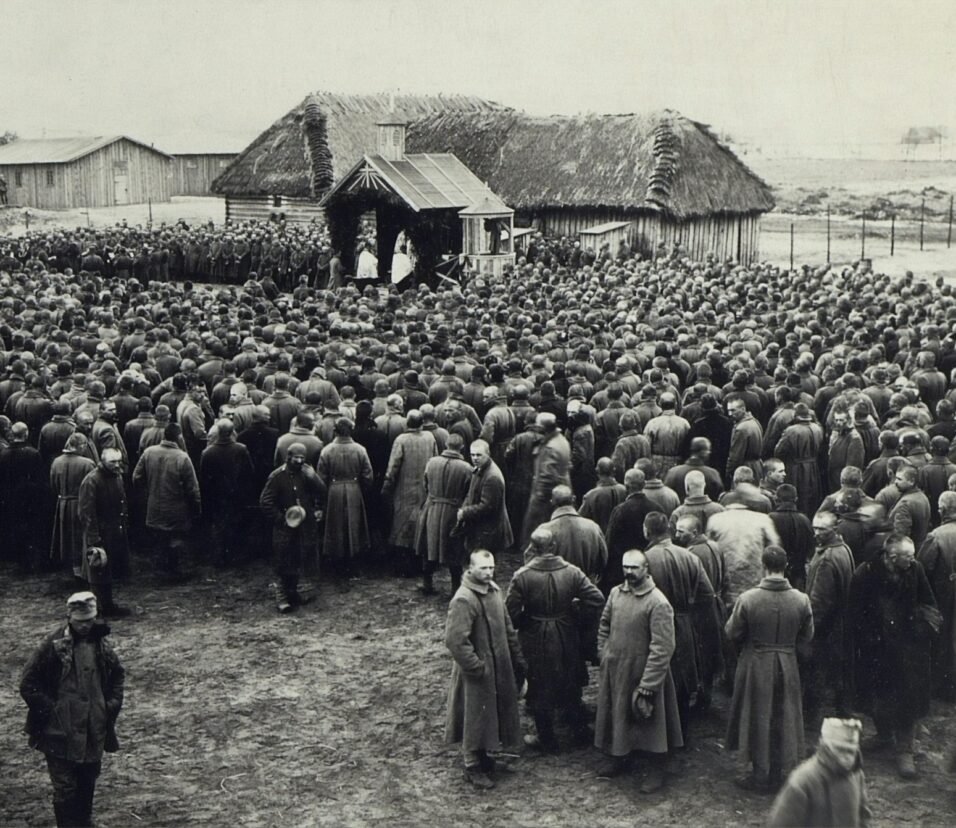The Marshall Plan, officially known as the European Recovery Program (ERP), stands as a testament to international cooperation and a monumental initiative to rebuild war-ravaged Europe after World War II. Designed to fortify Western European economies, counter the spread of communism, and cement ties between Europe and the United States, the Marshall Plan’s impacts resonate to this day.
Background: Europe in Ruins
In the aftermath of World War II, Europe confronted unparalleled devastation. Cities lay in ruins, agriculture suffered, and industries were paralyzed. Hunger, unemployment, and homelessness became the grim realities for millions. This dire situation created a fertile ground for the spread of radical ideologies, including communism, threatening Europe’s democratic fabric.
A Visionary Proposal: George C. Marshall’s Vision
Secretary of State George C. Marshall, during his speech at Harvard University in 1947, proposed an aid program. The core tenet of this vision was not merely financial assistance but comprehensive economic cooperation to rebuild and integrate Europe.
Crafting the Plan: The Process
Following Marshall’s proposal, European nations convened to discuss their needs. The outcome was a two-fold approach:
- Immediate Aid: Providing food, machinery, and goods to revive economies.
- Long-term Recovery: Focusing on infrastructure projects and the rebuilding of industries.
Funding and Implementation: A Herculean Task
The U.S. Congress, recognizing the program’s significance, approved approximately $13 billion (equivalent to over $130 billion today) for European recovery. Over four years, these funds flowed into various sectors:
- Infrastructure: Rebuilding roads, bridges, and railways.
- Industry: Restoring coal mines, factories, and machinery.
- Agriculture: Increasing productivity through modern equipment and practices.
Countering the Cold War: A Strategic Move
Beyond economic revival, the Marshall Plan had geopolitical motives. The Soviet Union’s influence was expanding in Eastern Europe. The U.S. viewed the ERP as a bulwark against communism, aiming to stabilize Western European nations and thereby prevent their tilt towards the Soviet sphere.
Economic Cooperation: Beyond Financial Aid
One of the Marshall Plan’s lesser-discussed but significant impacts was promoting European economic cooperation. It laid the groundwork for collaborative entities, such as the Organisation for European Economic Co-operation (OEEC), which would later evolve into the Organisation for Economic Co-operation and Development (OECD).
The Domino Effect: Birth of European Unity
The economic collaboration encouraged by the Marshall Plan indirectly set the stage for deeper European integration. It can be argued that the roots of today’s European Union are found in the cooperative ethos of the Marshall Plan era.
A Mixed Bag: Criticisms and Counterpoints
Despite its successes, the Marshall Plan faced critiques:
- Economic Dominance: Some viewed it as a tool for U.S. economic dominance, creating a market for American goods.
- Exclusion of Eastern Europe: Countries under Soviet influence were effectively barred from participating.
However, defenders argue that the plan’s benefits far outweighed its shortcomings, citing the rapid recovery and enduring peace in Western Europe.
Legacy: The Marshall Plan in Modern Context
Today, the Marshall Plan serves as a blueprint for international aid and cooperation:
- Economic Assistance: Modern aid programs often draw inspiration from the ERP, focusing on holistic economic development.
- Diplomatic Relations: The bonds formed between the U.S. and Western Europe during this era set the tone for decades of diplomatic and economic cooperation.
Personal Narratives and Perspectives
Many personal stories provide a richer understanding of the Marshall Plan’s impact. Farmers utilizing modern machinery, workers in revitalized factories, and families receiving food aid all have tales of hope and resurgence. These narratives breathe life into the plan’s broader geopolitical and economic dimensions.
Significance for Germany: The German Economic Miracle
The Federal Republic of Germany, partitioned and burdened with war guilt, was one of the primary beneficiaries of the Marshall Plan. This aid facilitated the nation’s remarkable recovery, often termed the “Wirtschaftswunder” or “Economic Miracle.”
- Industrial Revival: Funds from the ERP catalyzed the revitalization of Germany’s famed industries, especially the automotive sector, with companies like Volkswagen and Mercedes-Benz leading the charge.
- Rebuilding Infrastructure: Essential infrastructure like the autobahn system was repaired and expanded, aiding swift economic recovery.
Cultural Exchanges and Mutual Understanding
The Marshall Plan’s impact wasn’t just economic. It fostered a cultural bridge between the U.S. and Europe:
- Educational Programs: Scholarships and exchange programs allowed European students to study in the U.S., creating a cadre of leaders familiar with American values and systems.
- Media and Propaganda: The U.S. sponsored films, exhibitions, and publications that highlighted American culture, promoting mutual understanding.
The Rise of European Cooperation: The Coal and Steel Community
Economic cooperation promoted by the Marshall Plan set in motion other collaborative efforts. The European Coal and Steel Community (ECSC) of 1951, a direct offshoot of this cooperative spirit, laid the foundation for the future European Union. By pooling resources and forging economic ties, historic rivals like France and Germany paved the way for the creation of a united Europe.
Conclusion
The Marshall Plan, beyond its staggering figures and geopolitical implications, embodies the spirit of international cooperation. It showcases how nations, united by common goals, can overcome adversities and craft a brighter future. As global challenges mount in the 21st century, revisiting the ethos of the Marshall Plan can offer valuable insights into fostering global unity and progress.







